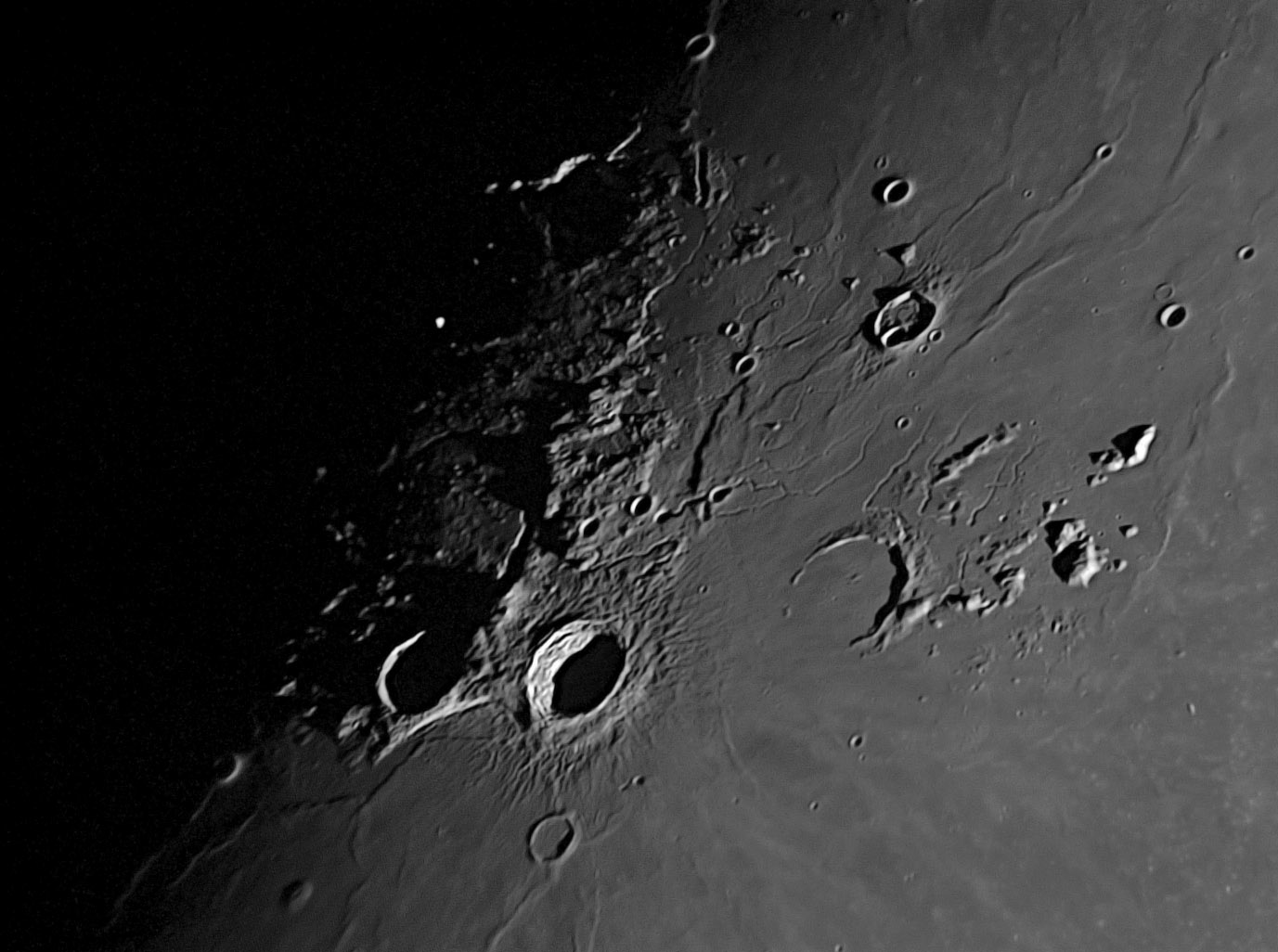
image by Zac Pujic
The Aristarchus Plateau is often seen under high Sun when it appears relatively flat with a yellow-green hue. But when the Sun just rises it displays a very different character. Zac’s excellent sunrise view reveals the small scale bumps on the plateau and more interestingly two relatively pronounced high spots. First, just northwest of Aristarchus is the east side of the rim that contains the Cobra Head. The Cobra Head is a broad depression that is the source area - which volcanologists call a vent - for the lavas that flowed northward, creating Schröter’s Valley. The tall rim of the Cobra Head is probably due to the ash fallback from the eruption cloud that emplaced the pervasive pyroclastic deposit on the Plateau. Slightly further north the eastern edge of Schröter’s Valley is higher than the western edge. This mountainous area seems to mark the western end of a block of unusual terrain that also contains the source areas for the small Aristarchus Rilles. Notice that the lava surface between the rilles is rougher than the surrounding lavas. This area seems to be an older piece of the lunar crust that has been uplifted and then surrounded by smoother, younger lavas. Now look at the Prinz Rilles to the east. Their vents are all within the Harbinger Mountains, another area of uplift. The Aristarchus block and the Harbinger Mountains - both probably uplifted by rising pods of magma, which were also the sources for the rilles. And what is the biggest uplift on the Moon, and the biggest rille? The Aristarchus Plateau and Schröter’s Valley.
Technical Details:
September 23, 2007. 31 cm Newtonian at f/20. Lumenera SkyNyx 2.1; frames stacked using Registax. CAW has over-enhanced Zac’s original image to emphasize the Plateau.
P.S.: There are many more fascinating details in this image, but let me point out one you may overlook. At the upper right corner there is a small bright impact crater, and just south of it is a very shallow dimple - it looks like an upside down dome. This is an uncommon example of an impact crater that has been nearly buried by a later lava flow - only a shallow hint of its existence remains.
Related links:
Rükl charts 18 & 19
Zac’s website
Yesterday's LPOD: A Swell New Dome
Tomorrow's LPOD: Shining Light on the Alps
COMMENTS?
Register, Log in, and join in the comments.



